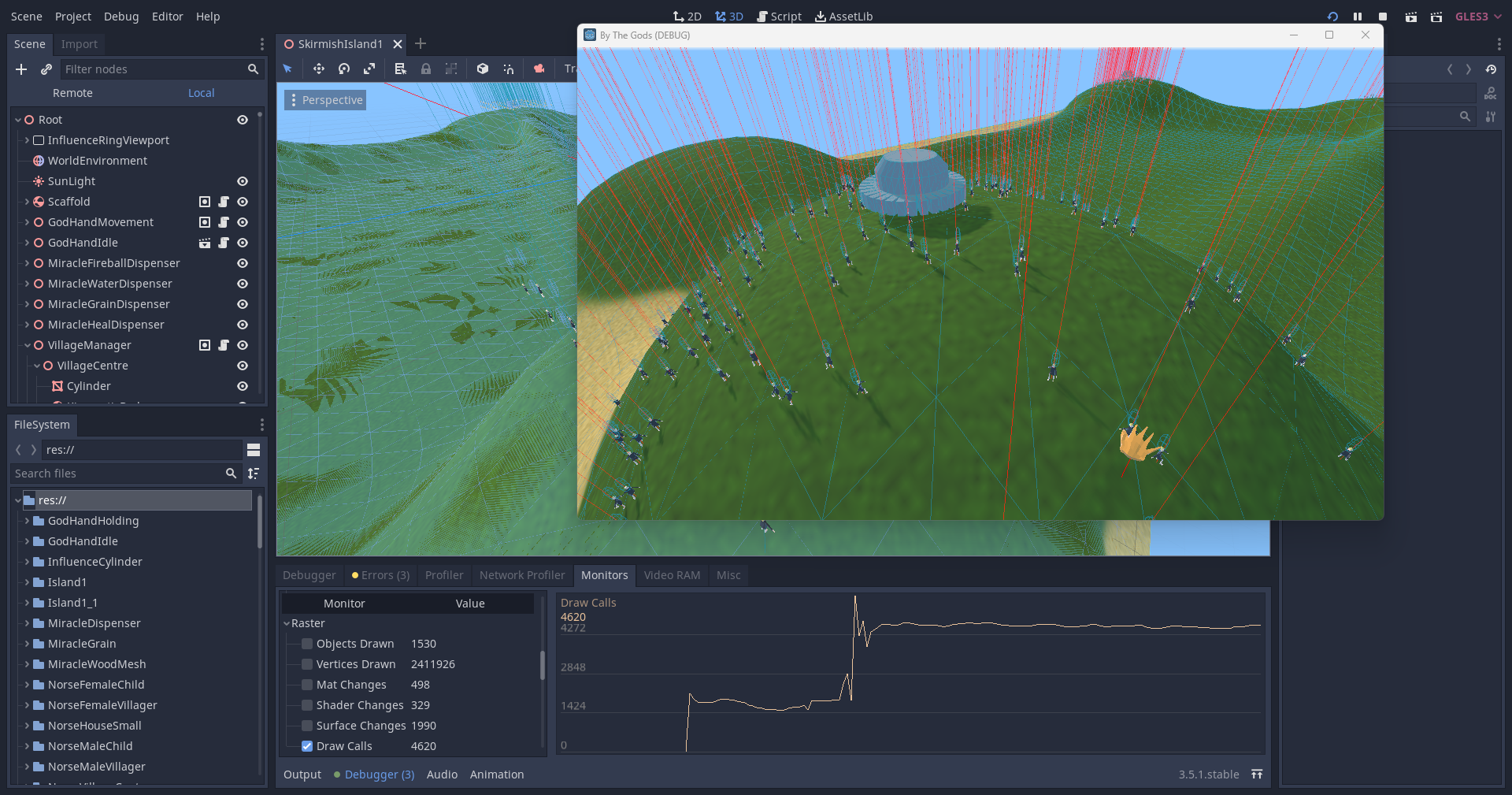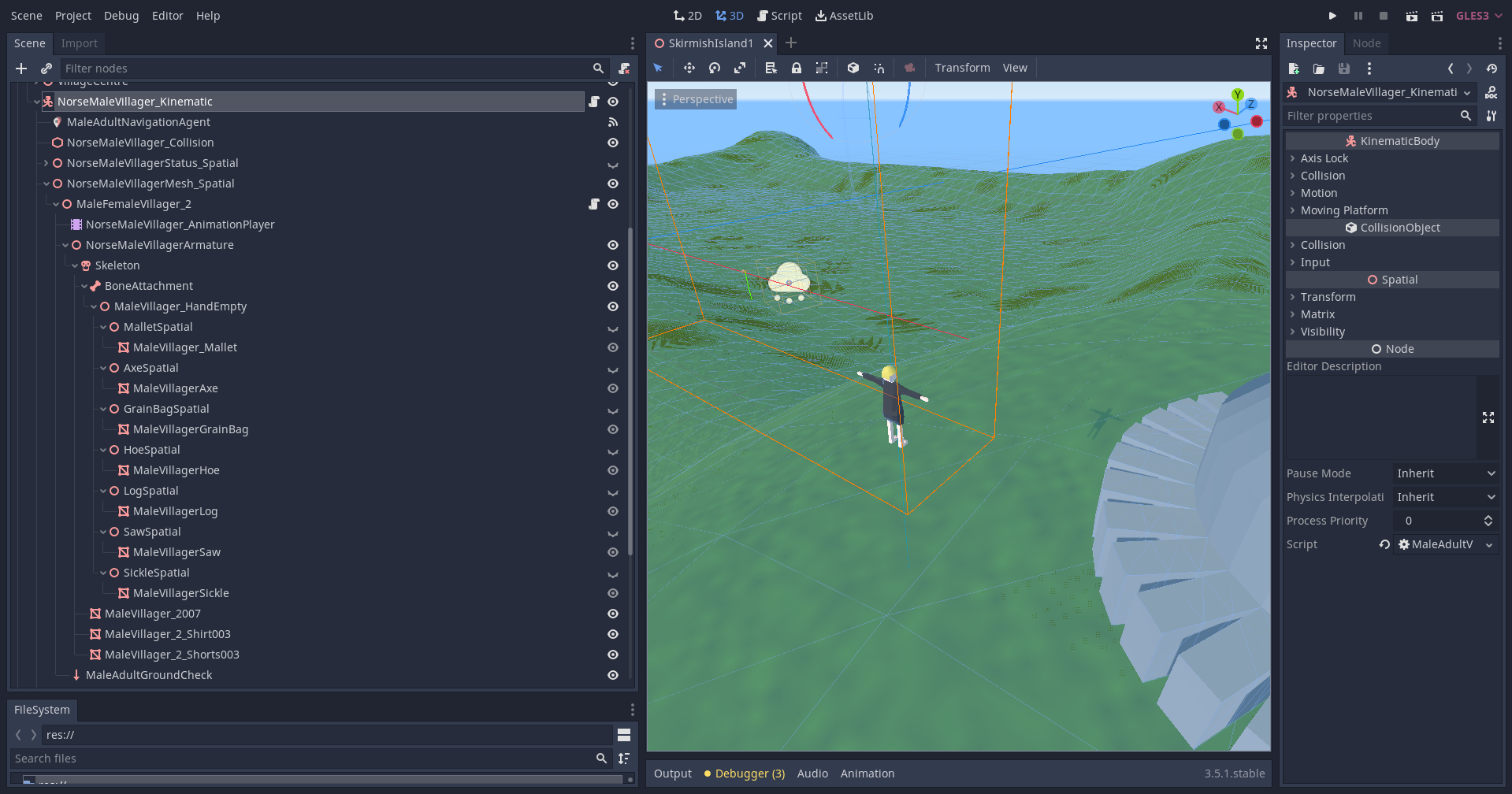So polygon count is not really a problem anymore. You can easily draw millions or tens of millions of polys, even on budget hardware.
It's mostly down to shader complexity and material switching. If you are using the standard material, then the shader should not be an issue. But having too many materials, is a huge problem.
Because the objects have to be batched by material, to minimize the state changes, and that way multiple objects can be drawn in one draw call. So the material switches and draw calls are somewhat related.
I'm not sure how Godot handles it, especially if each character has multiple objects and/or materials inside. But I have to imagine they thought about this, and there is some way to optimize it.
I've just never got that far with animated meshes, most of my work has been with static scenes, so I am not 100% sure how to do it in Godot.
 I've seen the profiler which looks interesting and helpful but that's about it.
I've seen the profiler which looks interesting and helpful but that's about it.

